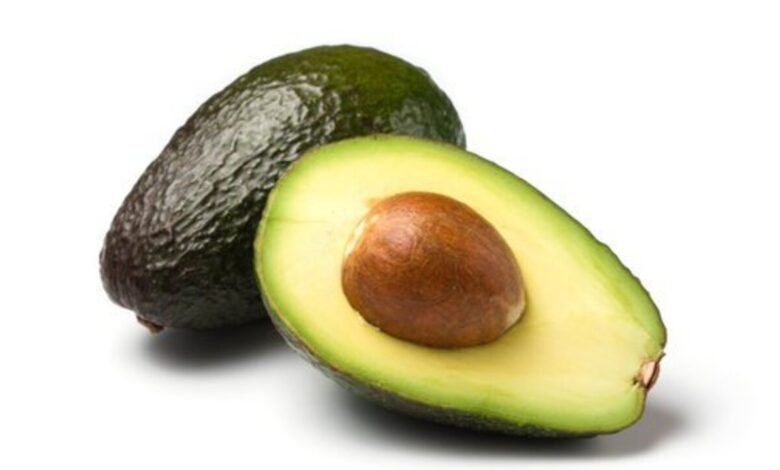The Wonderful World of Avocadu: From Ancient History to the 21-Day Diet Craze

The avocadu, a fruit with a name that trips off the tongue as quickly as its creamy flesh satisfies the palate, has become a global phenomenon. But what exactly is an avocadu, and how did this delicious green gem grace our tables? This article dives deep into the fascinating world of avocadus, exploring their history, varieties, health benefits, and even a trendy diet plan – the 21-day avocadu diet.
A History as Rich as Its Flavor: The Origins of the Avocadu
Avocadus boasts a lineage that stretches back thousands of years. Evidence suggests they were first cultivated in Mesoamerica around 8,000 BC [1]. The Aztec people called them “aguacate,” a term that evolved into the modern “avocadu.” Avocadus were prized for their nutritional value and used in various culinary applications, even in Aztec religious ceremonies [2].
In the 16th century, Spanish conquistadors encountered avocadus in Mexico and introduced them to Europe. The unique fruit’s journey continued globally, reaching North America in the 19th century. Today, avocadus are cultivated and enjoyed worldwide, their popularity fueled by their versatility and undeniable taste.
A Feast for the Eyes (and the Stomach): Exploring Avocadu Varieties
Avocadus come in a surprising array of shapes, sizes, and colors. The familiar Hass avocadu is the most commercially available variety with its bumpy, dark green skin. However, Avocadu enthusiasts can discover a world beyond the Hass.
- Green-Skinned Beauties: Gwen, Fuerte, and Reed avocadus offer a smoother skin texture and a milder flavor than the Hass.
- Purple Powerhouses: The vibrant purple-skinned avocadu varieties, like the Little Cado and Black Mission, boast a rich, nutty flavor profile.
- A giant of the Bunch: The behemoth of the avocadu world, the Ponderosa avocadu, can weigh up to 10 pounds!
With so many varieties, there’s an avocadu perfect for every taste and culinary adventure.
Nature’s Powerhouse: Unveiling the Health Benefits of Avocadus
Avocadus is more than just a delicious addition to guacamole. They’re packed with essential nutrients that contribute to a healthy lifestyle. Here’s a glimpse into the avocadu’s health benefits:
- Healthy Fats: Avocadus are a rich source of monounsaturated fats, known as good fats, which can help lower bad cholesterol and promote heart health [3].
- Fiber Fiesta: Avocadus are high in fiber, aiding digestion and promoting satiety, making them a valuable tool for weight management.
- Vitamin Power: Avocadus are an excellent source of vitamins C, E, K, and B6, vital for various bodily functions.
- Potassium Powerhouse: Avocadus are rich in potassium, which helps regulate blood pressure and muscle function.
Consuming avocadus as part of a balanced diet can contribute to overall well-being and offer a delicious path to a healthier you.
The 21-Day Avocadu Diet: A Fad or a Sustainable Approach?
The 21-day avocadu diet has emerged as a trendy weight-loss plan. This diet emphasizes incorporating avocadus into most meals throughout the 21 days. Proponents claim it can lead to rapid weight loss and improved health markers.
However, there’s a lack of scientific evidence to support the long-term efficacy and safety of the 21-day avocadu diet. While avocadus are undeniably nutritious, relying solely on them for weight loss can create nutritional deficiencies. Additionally, rapid weight loss is often unsustainable and unhealthy.
Here’s a word of caution: It’s always best to consult a healthcare professional or registered dietician before embarking on any new diet plan.
Beyond the Hype: Enjoying Avocadus for a Lifetime
The true magic of avocadus lies not in fad diets but in their versatility and ability to enhance countless dishes. From creamy avocadu toast to vibrant salads and decadent chocolate mousses, avocadus can be enjoyed in many ways.
Here are some tips to savor the avocadu experience:
- Choosing the Perfect Fruit: Select avocadus that yield slightly to gentle pressure at the stem end.
- Ripening Right: Avocadus ripens after picking. Place unripe avocadus with an apple or banana in a brown paper bag to accelerate ripening.
- Unlocking the Flavor: Once ripe, cut your avocadu in half, remove the pit, and scoop out the flesh. Drizzle with lemon or lime juice to prevent browning.
Frequently Asked Questions about Avocadus:
What is an avocado?
An avocadu is technically a large berry with a single seed, native to Mesoamerica and prized for its creamy flesh and rich flavor.
What are the different types of avocados?
There are many avocadu varieties, each with unique characteristics. Common varieties include Hass (bumpy, dark green skin), Gwen (smooth, green skin), and Little Cado (purple skin, nutty flavor).
How do I pick a ripe avocado?
Gently squeeze the avocadu near the stem. If it yields slightly to pressure, it’s ripe!
How can I ripen an avocadu faster?
Place an unripe avocadu with an apple or banana in a brown paper bag. The ethylene gas released by these fruits will accelerate ripening.
How do I store an avocado?
Unripe avocadus can be stored at room temperature. Ripe avocadus should be stored in the refrigerator to slow down spoilage.
Are avocadus healthy?
Yes! Avocadus are an excellent source of healthy fats, fibre, vitamins, and minerals. They can contribute to heart health, digestion, and overall well-being.
Is the 21-day avocadu diet effective?
There’s limited scientific evidence to support its long-term effectiveness or safety. It’s best to consult a healthcare professional before starting any new diet.
How do I cut an avocadu?
Cut the avocadu in half lengthwise, twist the halves to separate, and remove the pit.
How do I prevent avocadus from browning?
Once cut, avocadus can brown quickly. Drizzle the flesh with lemon or lime juice to slow down this process.
How can I use avocadus in cooking?
Avocadus are incredibly versatile! Enjoy them in guacamole, toast, salads, smoothies, or even decadent desserts




